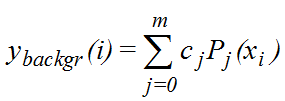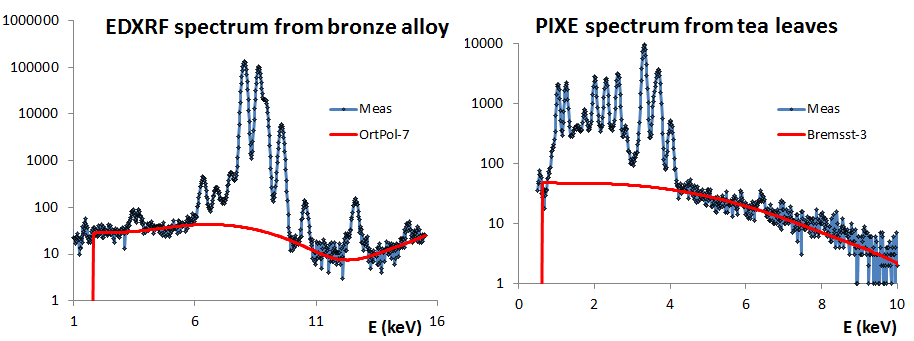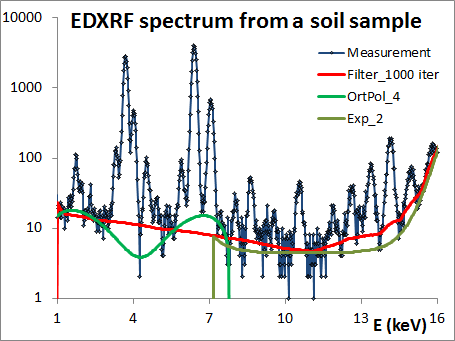4.6.2 Continuum fitting models
The x-ray continuum depends on the excitation mode, the energy distribution of the excitation radiation and the sample matrix. In the case of EDXRF the spectral distribution of the continuum will depend on additional factors, such as the x-ray tube operation high voltage, the use of filters or targets and several other causes. Therefore, different approximations are followed to simulate a function describing the continuum counts mathematically.
The main models include:
Filtering: The background counts of a channel are calculated as the average of the measured counts over an interval of channels corresponding to the full width at tenth of the maximum (FWTM). After a number of iterations, the procedure lowers the counts in the peak regions, whereas in continuum areas the average remains unchanged. This procedure works in most of the cases, but fails in the presence of abrupt changes in the continuum (e.g. in the presence of large absorption edges in the sample) or in the presence of high intensity peaks.
Linear polynomials: The continuum is modelled as a polynomial of selectable order n
y(Ei - E0) = ∑nan (Ei - E0)n. This model is useful to describe the background over a region of a few keV, and can be used in the case of having several edges in the continuum. The approach has to be used with care, to avoid a shape reflecting no physical meaning.Orthogonal Polynomial: the background is estimated by a linear combination of orthogonal polynomials:

where Pj(xi) is an orthogonal polynomial of degree j. The approach works well in the case of having complex background shape.Exponential: An exponential polynomial of the type:
 can be used, which is non-linear in the parameters
b1,...,bl. Can be used for the regions of continuum resembling an exponential shape.
can be used, which is non-linear in the parameters
b1,...,bl. Can be used for the regions of continuum resembling an exponential shape.Bremsstrahlung: In the case of particle excitation (electrons or positive ions) the background is radiative in nature and shows large curvatures. The slope of the emitted continuum is essentially an exponentially decreasing function, which is estimated as:
 The factor T(Ei) accounts for the absorption at low energies.
The factor T(Ei) accounts for the absorption at low energies.

In the case of complex continuum shape, it is advisable to split the spectrum in different regions for fitting. Each region might be better fit using different background models.
